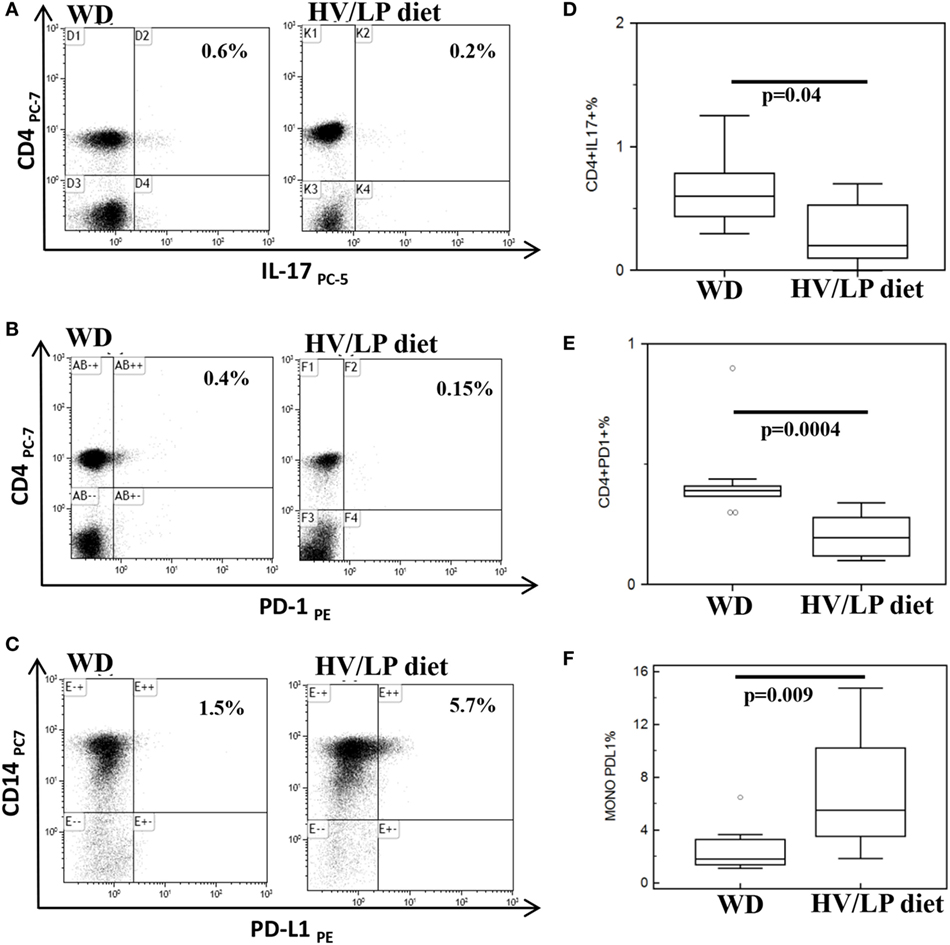24 3.6 Immune Parameters
A number of immune parameters were analyzed in each individual following one year on either diet. A significant difference in immune cell populations between the HV/LP diet and WD groups was observed in three immune parameters. In the HV/LP diet compared to the WD, IL-17 producing CD4 cells (p = 0.04) and PD-1 expressing CD4 cells were reduced (p < 0.001), while PD-L1 expressing monocytes were increased (p = 0.009) (Figure 8).

IL-17 Producing CD4 Cells
IL-17 producing CD4 cells are extensively characterized as inducers of the inflammatory response (Kordasti et al., 2009). Recently they’ve also been implicated in the pathogenesis of cancer, as well as autoimmune diseases, such as MS (Aranami & Yamamura, 2008). Considering how increased numbers of IL-17 producing CD4 cells leads to increased autoimmune disease incidence, their reduction in the HV/LP diet group is in accordance with the hypothesis that MS disease activity could be affected by dietary patterns and benefit from a HV/LP diet.
PD-1 Expressing CD4 Cells and PD-L1 Expressing Monocytes
The authors of this paper previously reported that PD-1 expressing CD4 cells are increased in MS patients compared to healthy controls (Saresella et al., 2013). As such, a decrease in these cells in response to the HV/LP diet is also in accordance with the hypothesis.
In the same paper, the authors also reported that CD14+/PD-L1+ monocytes prevail during MS remission (Saresella et al., 2013). Similarly, another paper stated that these cells are implicated in autoimmune disease remission by preventing the immune system from attacking itself (Trabattoni et al., 2009). Thus increase in this immune profile observed in MS patients adhering to a HV/LP diet is consistent with improved disease outcomes.
